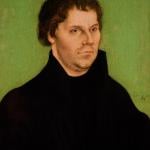
Plodding forward . . .
Actually, what I have been saying is an oversimplification. It was only gradually that the chain of transmitters, known in Arabic as an isnad, became a required part of a hadith report. For approximately the first century after the death of the Prophet, no special care was taken in the transmission of traditions about him. Perhaps the Muslims could not imagine anybody willing to lie or to forge in the name of religion. If so, they were naive, for the period saw thousands of forged traditions emerge, supporting this or that religious or political faction against its rivals. There were, in fact, powerful reasons to want various religious and political and judicial questions to be resolved in one’s own interest, and some unscrupulous people were quite willing to put words into the Prophet’s mouth to make sure that such would be the case.[1]
Serious students saw the need for some control, some method of sorting out the hadith reports and separating the authentic from the spurious and self-interested. They required each narrator to state his source, preferably back to the time of the Prophet. Gradually, a science of hadith criticism emerged in the second and third centuries after Muhammad. This criticism was undertaken especially by those concerned with law, who had an obvious interest in making certain that the legal precedents upon which they based their decisions were accurately reported.
The first need was for biographies of the people who showed up prominently in the various traditions and in the lists of those who transmitted them. Thus, there is a rich body of biographical works on the Prophet himself, on his companions, and on each generation thereafter. Beyond sheer interest in the lives of important people, there was generally a very practical goal in this study, and that goal was to check the trustworthiness of each transmitter. Looking back at the sample hadith quoted above, scholars of the subject would want to know whether Abdullah ibn Yusuf and al-Layth actually lived at the proper time and place. Could they really have met? If it could be demonstrated that Abdullah spent his entire life in Spain, while al-Layth never left Iraq, that would be sufficient reason to reject the report. Or perhaps Abu al-Khayr, the transmitter who supposedly heard the report from a man named Uqba ibn Amir, was born after Uqba’s death, or was only eighteen months old when Uqba passed away. In either case, obviously, Abu al-Khayr could hardly have heard and passed on a report from Uqba, and the tradition would, again, have to be ruled out as a probable fraud. (Such things were occasionally discovered in isnads that, on the surface, looked perfectly plausible.) Was Yazid a reliable transmitter? Did he have a reputation as an honest man? Did he have any particular reason for passing on a tradition that condemned the wearing of silk? (Was he, perhaps, a cotton merchant?) In the consideration of many hadith reports, the question of the transmitters’ religious commitments had to be taken into account. Were they heretics? Were they Shiites? Did they have a particular theological axe to grind?
[1] Many Latter-day Saint historians accepted Mark Hoffman’s forgeries for similar reasons. It had never entered their minds that anyone would want to create fraudulent Mormon historical texts.












